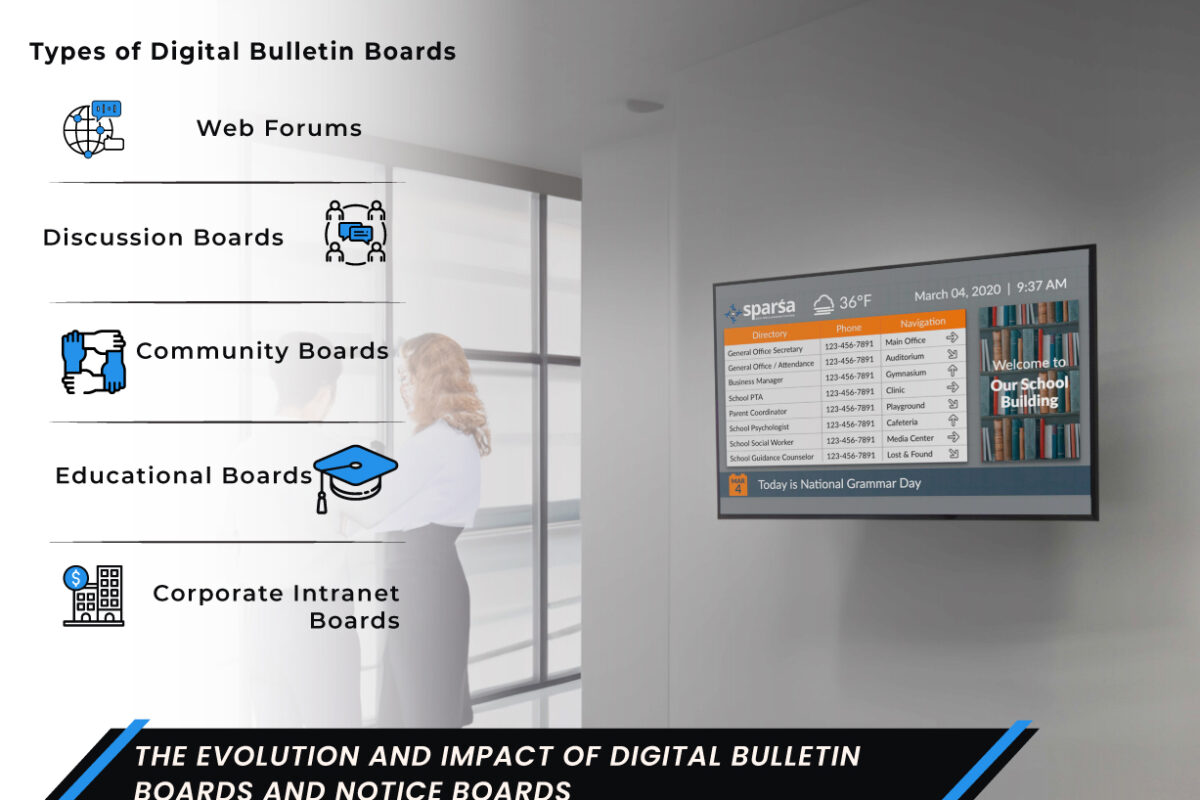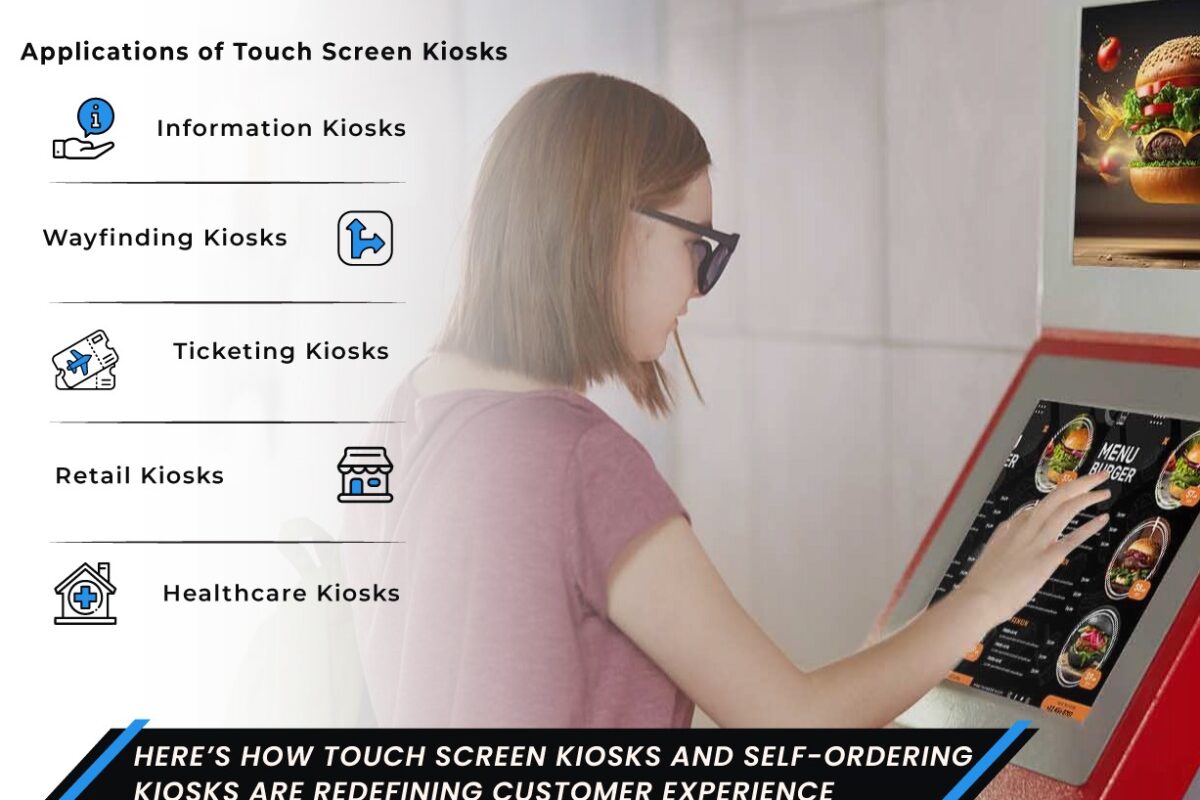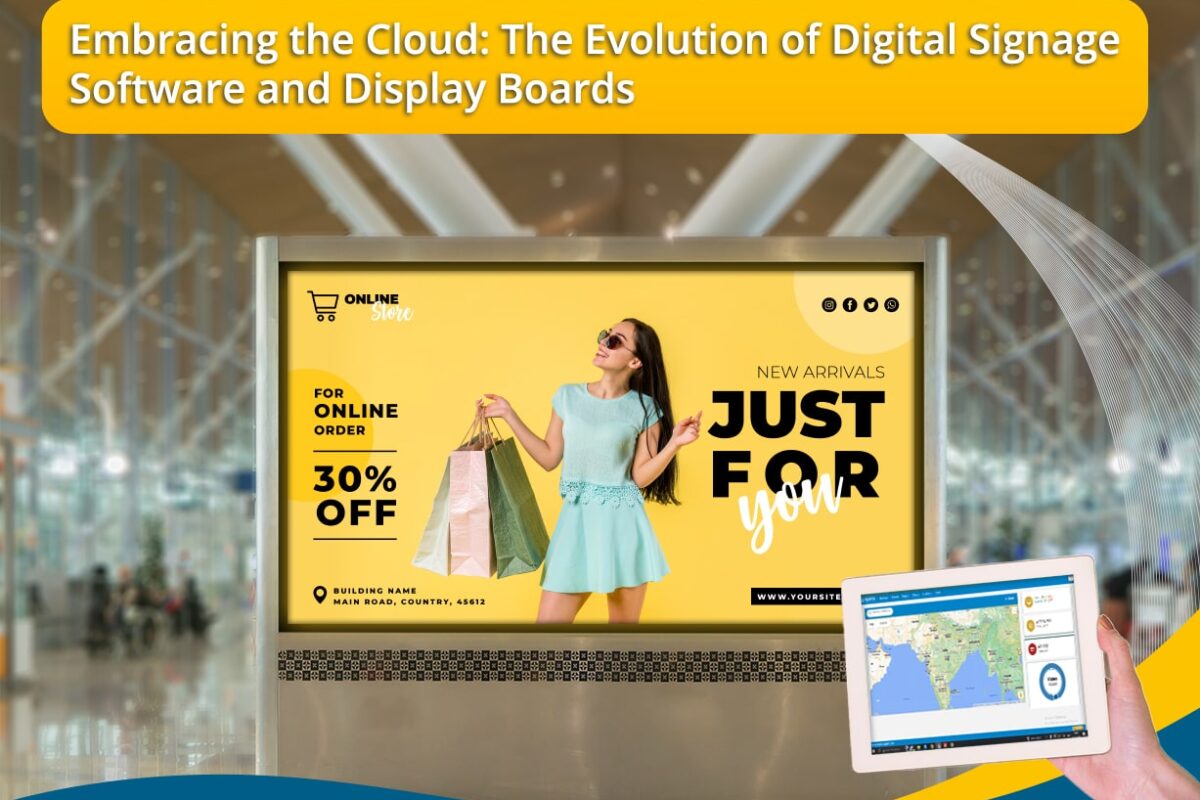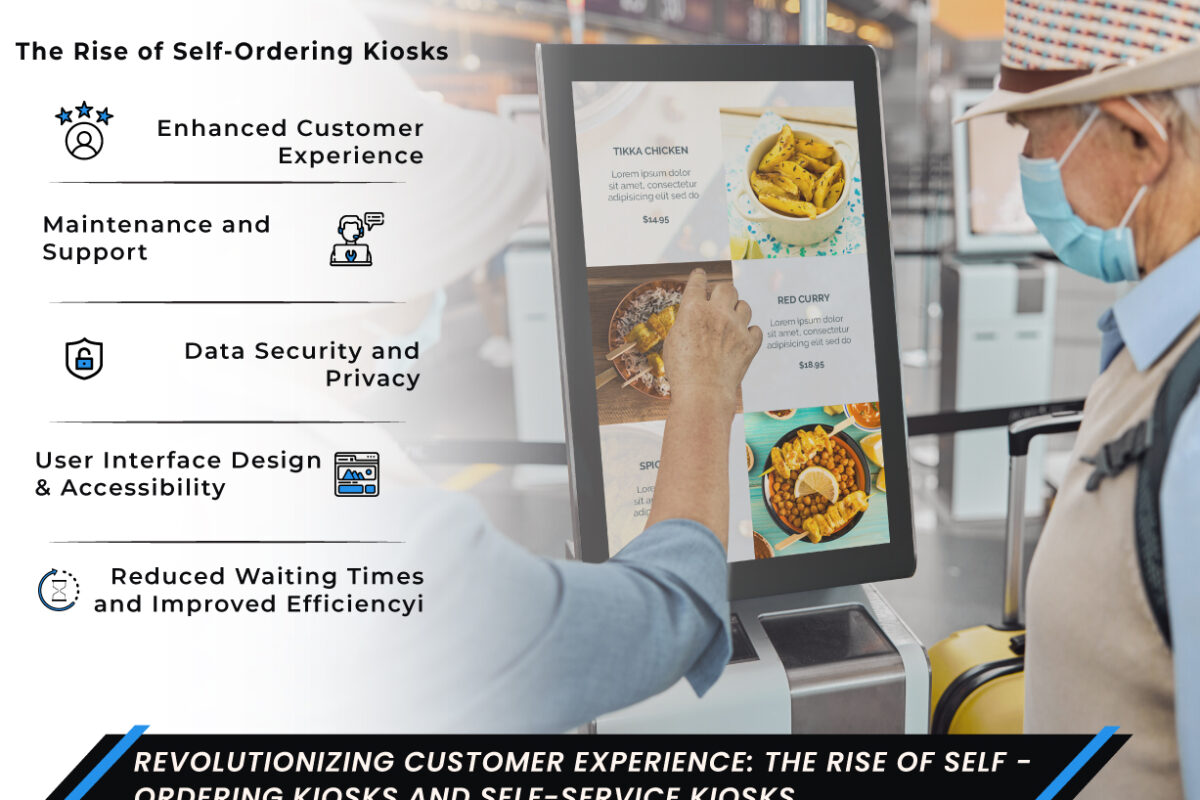In the past two decades, the world has witnessed a technological renaissance that has revolutionized the way information is disseminated and consumed. One significant advancement in this digital era has been the emergence of digital bulletin boards and digital notice boards. These innovative platforms have transcended the limitations of traditional physical boards, ushering in a new era of communication and information-sharing. In this blog, we will explore the evolution, functionalities, benefits, and societal impact of digital bulletin boards and digital notice boards.
I. The Evolution of Digital Bulletin Boards and Digital Notice Boards
- – Early Days of Physical Bulletin Boards
- The concept of bulletin boards can be traced back to the ancient Romans who used wooden boards to post public announcements and messages. Over time, physical bulletin boards became common in educational institutions, community centers, and offices to share information and announcements.
- – Emergence of Digital Bulletin Boards
- The advent of the internet and the World Wide Web in the 1990s paved the way for digital bulletin boards. Early web forums and message boards acted as virtual bulletin boards where users could post and access information on various topics.
- – Transition to Interactive Platforms
- With technological advancements and the rise of social media, bulletin boards transformed into more interactive platforms. Online forums, chat rooms, and social media groups allowed users to engage in real-time discussions and share multimedia content.
II. Understanding Digital Bulletin Boards
- – Definition and Functionality
- Digital bulletin boards, also known as electronic bulletin boards or e-boards, are online platforms that enable users to post and access information in a structured manner. These platforms can be hosted locally on a network or accessed via the internet, allowing global participation.
- Types of Digital Bulletin Boards
- a. Web Forums and Discussion Boards: Platforms where users can start discussions, post queries, and share knowledge on specific topics.
- b. Community Boards: Localized digital bulletin boards aimed at disseminating information within a specific community or organization.
- c. Educational Boards: Digital notice boards used in educational institutions to share announcements, schedules, and resources.
- d. Corporate Intranet Boards: Internal bulletin boards within organizations for communicating updates and important messages.
III. Digital Notice Boards in the Modern Era
- – Dynamic Content Display
- Unlike static physical notice boards, digital notice boards offer dynamic content display. Administrators can easily update and schedule content remotely, ensuring real-time information dissemination.
- – Multimedia Capabilities
- Digital notice boards can showcase multimedia content, including images, videos, and interactive elements. This enhances engagement and attracts attention effectively.
- – Integration with Data Sources
- Modern digital notice boards can integrate with data sources like calendars, weather forecasts, and news feeds, providing users with comprehensive and up-to-date information.
IV. The Advantages of Going Digital
- – Environmental Sustainability
- By adopting digital bulletin boards and notice boards, we significantly reduce paper usage, contributing to environmental conservation.
- – Cost-Effectiveness
- Digital platforms eliminate the recurring expenses associated with printing and distributing physical notices.
- – Real-time Updates
- With instant updates, users receive timely information, minimizing confusion and misunderstandings.
- – Wider Reach
- Digital bulletin boards on the internet can reach a global audience, fostering inclusivity and information accessibility.
V. Applications of Digital Bulletin Boards and Notice Boards
- Educational Institutions
Digital bulletin boards have revolutionized communication in educational settings. Schools and universities can use digital platforms to share academic schedules, exam timetables, important announcements, and extracurricular activities with students, staff, and parents. Additionally, digital notice boards in classrooms or common areas provide real-time updates on events and upcoming seminars.
- Corporate Environments
In the corporate world, digital bulletin boards streamline internal communication. Companies can use these platforms to display company-wide announcements, employee recognition programs, and updates on ongoing projects. Digital notice boards in office lobbies can also showcase key achievements and promote a positive company culture.
- Public Spaces
Digital notice boards in public spaces serve as essential tools for disseminating information. They can display transportation schedules, weather updates, emergency alerts, and local events, keeping the public well-informed and engaged.
- Healthcare Facilities
Hospitals and clinics can benefit from digital bulletin boards to communicate important health-related information, such as vaccination drives, health campaigns, and awareness programs. Digital notice boards in waiting areas can also provide health tips and educational content.
VI. The Societal Impact of Digital Bulletin Boards
- – Education Sector
- Digital notice boards in schools and universities streamline communication between faculty, students, and parents, fostering a collaborative learning environment.
- – Corporate Communication
- In businesses, digital bulletin boards improve internal communication, ensuring all employees receive important updates promptly.
- – Community Engagement
- Digital bulletin boards facilitate community discussions and knowledge-sharing, strengthening social bonds.
- – Emergency Communication
- During crises or emergencies, digital bulletin boards play a crucial role in disseminating vital information to the public rapidly.
Conclusion
Digital bulletin boards and digital notice boards have transformed the way information is shared, making communication more efficient, engaging, and environmentally responsible. As we continue to embrace technological innovations, these platforms will remain instrumental in creating interconnected communities, facilitating knowledge exchange, and shaping a more informed and connected world.
Digital bulletin boards and notice boards have undoubtedly revolutionized communication and information sharing across various domains. Their dynamic nature, real-time updates, and interactive features have made them indispensable tools for modern organizations, institutions, and public spaces. By embracing these digital platforms, we can create more sustainable, engaging, and efficient communication ecosystems, fostering greater connectivity within communities and reaping the benefits of the digital age.
Wish to start now? It is never too late. Connect with our experts at Sparsa Digital today.





